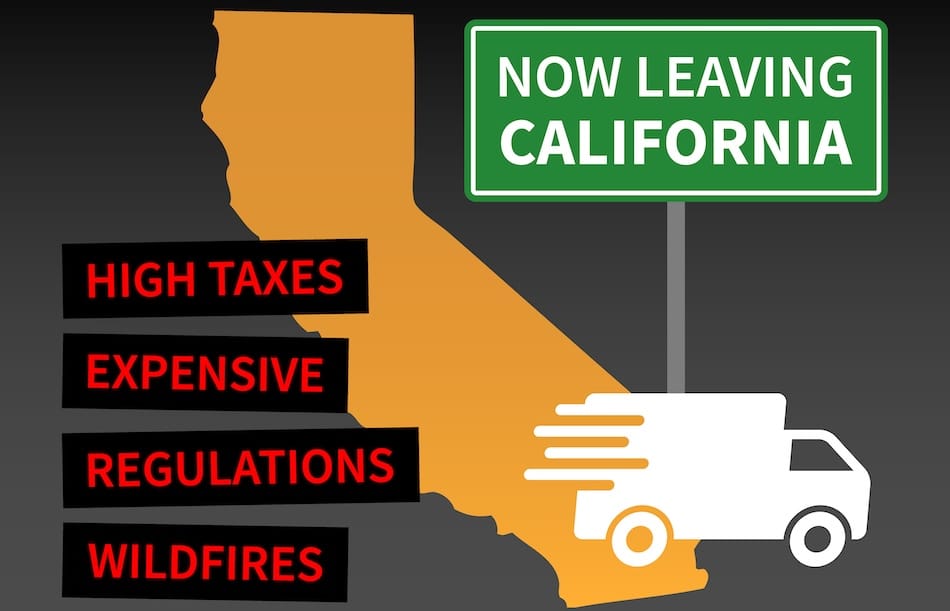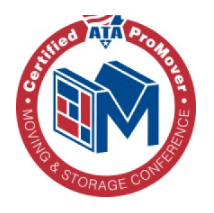Where to Move from California: Best States & Moving Tips 2024

Record numbers of Californians are charting new paths across America in 2024, transforming both the communities they leave behind and the ones they choose to call home. This historic migration reflects deeper shifts in how Americans view prosperity, lifestyle, and opportunity in the post-pandemic terrain.
The Golden State’s residents are discovering compelling alternatives in places like Texas, where zero state income tax meets robust job growth, and Florida, where tropical living pairs with business-friendly policies.
Beyond the headlines, real migration data shows Californians finding success in Nevada’s entertainment hub, Arizona’s familiar climate, and Tennessee’s energetic cultural landscape.
Each destination offers unique advantages for former California residents. Austin’s tech corridor provides career growth alongside affordable housing prices, while Phoenix combines familiar sunshine with significantly lower living costs.
Even international options like Vancouver and Costa Rica are emerging as attractive alternatives for those seeking more dramatic changes.
Our decades of experience moving Californians across state lines reveals consistent patterns in successful transitions. From investigating housing markets and assessing potential effects to understanding local job sectors, this thorough guide explores the real factors driving relocation decisions.
We’ll explore current migration trends, compare cost-of-living data across top destinations, and share essential moving strategies to help transform your California exodus into a promising new chapter.
Current Migration Trends From California
Latest Statistics and Numbers
California’s migration patterns have taken a fascinating turn in recent years. Here’s what the numbers tell us: Texas leads the pack as the #1 destination, with cities like Austin, Dallas, and Houston welcoming thousands of former California residents each month.
The migration map doesn’t stop there – Nevada, Oregon, Washington, Florida, Arizona, and Tennessee have emerged as popular landing spots, each offering their own distinctive combination of opportunities and lifestyle benefits.
Primary Reasons for the California Exodus
Housing Market Challenges
Let’s talk real numbers: California’s median home price sits at roughly $750,000 – more than double the national average. This stark reality has created a housing crunch that’s reshaping migration patterns.
Picture this: a 2,000-square-foot home in Austin might cost $400,000, while a similar property in Los Angeles could run north of $1.2 million. For many families, this math simply doesn’t add up anymore.
Tax Burden Analysis
The tax situation in California has become a game-changer for many residents. While California’s top state income tax rate reaches 13.3%, states like Texas, Nevada, and Florida charge exactly zero state income tax.
For a family earning $150,000 annually, this difference could mean keeping an extra $12,000-15,000 in their pocket each year – enough to fund a college savings plan or boost retirement savings significantly.
Business Environment Changes
The business environment tells an equally compelling story. Major companies like Oracle, Tesla, and HP have made headlines by relocating operations to more business-friendly states. These moves bring significant ripple effects: when companies relocate, they often take hundreds or thousands of jobs with them.
States like Texas and Tennessee sweeten the deal with lower operational costs, reduced regulations, and pro-business tax incentives that can save companies millions annually.
People Moving to California
Current Immigration Numbers
Despite the outbound trends, California’s magnetic pull remains strong in key sectors. Silicon Valley continues to draw top tech talent, while Hollywood attracts thousands of creative professionals yearly. The state welcomed over 400,000 new residents last year, primarily in technology, entertainment, and innovation-focused industries.
Popular California Destinations
The Golden State’s most sought-after locations continue to develop. The San Francisco Bay Area leads in tech-sector growth, while Greater Los Angeles dominates entertainment industry relocations.
Sacramento has emerged as a surprising contender, offering a sweet spot of career opportunities and relatively lower living costs – with median home prices about 40% below San Francisco levels.
For those considering a relocation to the state, using a detailed moving guide to California can provide valuable insights and help streamline the transition.
Key Attraction Factors
What keeps California’s appeal strong? It’s a powerful mix of career potential and lifestyle benefits. The state hosts 18 of the Fortune 500 companies and boasts the highest concentration of venture capital firms in the country.
Add in 840 miles of coastline, 300+ days of sunshine annually, and unmatched cultural diversity, and you’ll understand why many still choose to call California home despite the challenges.
Top States Welcoming California Residents
Texas Migration Analysis
Popular Cities and Regions
Austin stands out as Texas’s crown jewel for California transplants, with its vibrant tech ecosystem mirroring Silicon Valley’s innovation-driven culture.
The city’s combination of career opportunities and dynamic lifestyle has created a natural landing spot for West Coast professionals. Dallas and Houston round out Texas’s trinity of opportunity, each offering distinct advantages – from Dallas’s corporate headquarters to Houston’s energy sector dominance.
Cost Comparison With California
Here’s what makes Texas truly compelling: the numbers tell a striking story. A $1 million California home typically costs just $400,000-$500,000 in comparable Texas neighborhoods.
Factor in Texas’s zero state income tax, and the math becomes even more attractive. Real-world savings extend beyond housing – everything from groceries to utilities typically runs 15-30% lower than California prices.
Job Market Opportunities
Texas’s economic terrain extends far beyond its traditional energy roots. Austin’s tech corridor now hosts operations from industry giants like Tesla, Apple, and Google. The state’s pro-business climate has sparked a wave of corporate relocations, creating a job market that’s both flexible and responsive.
For those planning a relocation, interstate moving solutions can simplify the transition. From startups to Fortune 500 companies, opportunities abound across multiple sectors.
Arizona’s Growing Appeal
Climate Similarities
For Southern Californians, Arizona feels like home from day one. Picture 300+ days of sunshine annually, perfect for maintaining an active outdoor lifestyle. While Phoenix temperatures run higher than Los Angeles, the low humidity makes even summer days more manageable. Year-round golf, hiking, and outdoor dining remain part of daily life.
Housing Market Benefits
Phoenix’s housing market offers a breath of fresh air for California buyers. New construction communities feature modern amenities at prices that feel like a throwback to California’s 1990s.
A typical 2,500-square-foot new build in Phoenix’s desirable suburbs runs about half the cost of a similar California property. For those navigating the complexities of relocating, long-distance moving services can help make the process seamless. First-time buyers often find themselves upgrading from California rentals to Arizona home ownership.
Nevada’s Strategic Advantages
Tax Benefits
Nevada’s tax structure delivers immediate financial impact for California transplants. Beyond the obvious perk of no state income tax, business owners benefit from favorable corporate tax policies and simplified regulations. Property taxes average 25-40% lower than California rates, creating substantial long-term savings.
Proximity Benefits
Las Vegas and Reno put California within easy reach – just a quick one-hour flight to most California hubs. Weekend trips to visit family or maintain business connections remain hassle-free. The shared Pacific time zone simplifies both business operations and personal schedules.
Other Popular Destinations
Florida’s Unique Appeal
Florida matches California’s sunshine while stretching dollars significantly further. Miami’s international flair and Tampa’s laid-back vibe offer distinct lifestyle choices. A 3-bedroom beachfront condo in Florida often costs less than a starter home in coastal California. The absence of state income tax sweetens the deal for high-earning professionals.
Washington’s Tech Scene
Seattle presents a familiar path for Silicon Valley tech workers. While not the bargain hunter’s paradise, Seattle’s housing costs average 20-30% below Bay Area prices. The region’s natural beauty, innovative spirit, and established tech ecosystem create an environment where California transplants quickly find their footing.
Tennessee’s Cultural Draw
Nashville has transformed from music city to multi-industry powerhouse. The combination of Southern hospitality and modern opportunity creates an irresistible draw. Housing costs run 50-60% below California levels, while the entertainment scene rivals major coastal cities. Zero state income tax and a lower overall cost of living make the transition financially rewarding.
Essential Factors For Choosing Your New Home
Financial Considerations
Cost of Living Analysis
Let’s examine precise figures regarding leaving California behind. A family of four typically sees their monthly expenses drop 30-40% when relocating to Texas cities compared to Los Angeles or San Francisco.
Here’s what matters most: understanding your complete financial picture, from weekly grocery runs to monthly utility bills and daily transportation costs. While most destinations offer substantial savings compared to California living, each area has its own unique economic fingerprint.
Housing Market Comparison
Here’s an exciting reality we’ve witnessed firsthand: your California housing budget often stretches dramatically further in other states. Picture trading a modest California apartment for a spacious single-family home with a yard in Arizona or Tennessee – we help families make this upgrade every day. Smart planning means looking beyond the listing price to consider:
- Property tax variations by county and state
- Regional insurance rates and coverage requirements
- Typical maintenance costs for different climate zones
Tax Structure Differences
The tax terrain can transform your financial future. States like Nevada, Texas, and Florida welcome newcomers with zero state income tax – quite a change from California’s substantial rates.
But here’s the catch: some regions balance lower income taxes with higher property tax rates. Understanding this give-and-take helps paint a realistic picture of your actual tax obligations.
Lifestyle Factors
Climate Variations
Weather shapes daily life more than most realize. While Arizona offers familiar sunshine, relocating to Washington means adapting to a whole new climate rhythm. Consider these practical impacts:
- Seasonal wardrobe needs
- Home maintenance requirements
- Vehicle considerations (think snow tires or rust protection)
- Utility cost fluctuations throughout the year
Cultural Adjustments
Every region has its own heartbeat and social customs. Southern hospitality isn’t just a saying – it’s a way of life that differs notably from California’s casual vibe. East Coast cities march to their own distinct tempo. The good news? Most communities offer newcomer groups and social organizations specifically designed to help transplants feel at home.
Recreational Options
Your ideal home should complement your lifestyle passions. Nashville’s legendary music scene might call to music lovers, while Colorado’s mountains beckon outdoor enthusiasts. Take stock of:
- Local parks and nature areas
- Entertainment venues and cultural attractions
- Sports facilities and fitness options
- Community events and festivals
Professional Opportunities
Job Market Analysis
Career prospects vary significantly by region, with each area offering its own mix of opportunities and challenges. Look beyond basic employment rates to understand:
- Industry-specific salary ranges
- Local job market growth trends
- Cost of living adjusted income comparisons
- Professional networking opportunities
Industry Concentrations
Certain cities have become powerhouse hubs for specific sectors. Austin’s tech scene now rivals Silicon Valley, while Nashville leads in healthcare innovation. Finding your industry’s sweet spot means better career growth potential and professional networking opportunities. Research which locations align with your expertise and career goals.
Remote Work Possibilities
Working remotely opens new doors for relocation, but success depends on more than just internet access. Consider these critical factors:
- Local internet infrastructure quality
- Available co-working spaces and professional communities
- Time zone alignment with your company or clients
- State-specific remote work incentives and programs
Remember, the perfect relocation balances multiple factors based on your unique situation. Our years of moving experience have shown that taking time to evaluate these elements leads to smoother transitions and happier outcomes. Focus on the factors that align most closely with your family’s priorities and long-term goals.
International Options For Californians
Popular Countries
Canada’s Appeal
Think of Canada as California’s laid-back northern cousin – familiar enough to feel like home, yet with its own distinct charm. Cities like Vancouver and Toronto have become magnets for Californians, thanks to their thriving tech sectors and world-class healthcare.
Picture yourself in Vancouver’s bustling downtown, where 68% of tech workers are international transplants. The real draw? You’re just a short flight from California, making those family visits a breeze. Plus, with unemployment rates hovering around 5% and thorough social programs, the transition feels more like an upgrade than a compromise.
Mexico’s Growing Expat Communities
Here’s something interesting: Mexico has seen a 47% increase in American expats since 2019. Places like Puerto Vallarta and San Miguel de Allende have evolved into thriving international communities where English flows as freely as Spanish.
A three-bedroom home that might cost $1.2 million in San Diego? You’ll find similar properties in Puerto Vallarta for around $300,000. Beyond the numbers, imagine starting your day with fresh local coffee on your terrace, surrounded by colonial architecture and modern amenities – that’s the reality for many Californians who’ve made the move.
Costa Rica’s Lifestyle Benefits
Costa Rica isn’t just a vacation paradise – it’s become home to over 70,000 American expatriates. The country’s commitment to environmental protection (covering 28% of its land as national parks) resonates deeply with environmentally conscious Californians.
From the surf-friendly shores of Tamarindo to the temperate Central Valley, you’ll find communities where sustainable living isn’t just a buzzword – it’s a way of life. The country runs on 98% renewable energy, making it a natural fit for eco-minded Californians.
International Moving Considerations
Visa Requirements
Let’s talk practical steps: Each country has its own pathway to residency. Canada’s Express Entry system works on a points-based structure, while Mexico offers straightforward temporary resident visas for retirees with sufficient income ($2,700 monthly).
Costa Rica’s pensionado visa requires just $1,000 monthly income. Processing times typically range from 2-6 months, depending on the visa type and country.
Cost Analysis
Breaking down the numbers makes a real difference in international moves. Consider this: While a cup of coffee might cost $5 in San Francisco, you’ll pay $2 in Toronto, $1.50 in Mexico City, or $1.75 in San José, Costa Rica. Banking fees for international transfers typically range from 1-3% of the transaction amount. Create a monthly budget that includes:
-
- Housing costs (rent/mortgage)
- Utilities (often 20-30% lower than California)
- Healthcare premiums
- Transportation
- Food and entertainment
- Emergency fund (recommend 6 months of expenses)
Healthcare Systems
Healthcare quality varies significantly by location. Canada’s universal system covers most medical needs, though wait times for non-emergency procedures average 2-4 months.
Mexico’s private healthcare costs about 50% less than U.S. prices, while Costa Rica ranks higher than the U.S. in healthcare efficiency. Many expats opt for a blend of local coverage and international health insurance, typically costing $200-400 monthly for total protection.
Moving internationally requires specialized expertise – that’s where professional international movers become invaluable partners.
From maneuvering through customs requirements to ensuring your family heirlooms arrive safely, experienced movers handle the complex logistics while you focus on starting your new adventure. Typical shipping times range from 2-3 weeks to Canada, 3-4 weeks to Mexico, and 4-6 weeks to Costa Rica.
Practical Moving Tips
Timeline Planning
Ready to make your move from California? Let’s map out a timeline that puts you in control. Starting 3-4 months ahead gives you the breathing room needed for a smooth transition. First up: research your destination and lock down your new living arrangements.
At the 2-month mark, tackle that closet cleanout and home organization you’ve been meaning to do. About 30 days before moving day, schedule your utility transfers – both disconnections at your current place and setups at your new home. Those final precious weeks? That’s prime packing time, with regular check-ins on your moving logistics.
Cost Management Strategies
Moving costs don’t have to break the bank – there are smart ways to keep expenses in check while ensuring a quality move. Here’s a money-saving insider tip: book your move between October and April when rates typically drop by 20-30%.
Before packing starts, host a garage sale or connect with local donation centers – less to move means lower costs.
Create a detailed budget that captures everything: transportation, packing materials, temporary storage needs, insurance coverage, and those often-forgotten travel expenses like meals and hotels during transit. To better understand how these elements factor in, it helps to review moving service costs and budget accordingly.
Professional Moving Services
Finding the right moving partner makes all the difference in your relocation experience. Professional moving services come in different tiers to match your specific situation.
Full-service moving takes care of everything – from wrapping that family china to setting up your furniture at the new place. Perfect for busy professionals or families juggling multiple priorities. Looking to balance hands-on involvement with professional support?
Partial services let you handle the packing while leaving the heavy lifting to trained movers. Living in an apartment or smaller home?
Specialized small-move services deliver efficiency without excess costs. Exploring various moving services can help you decide which option aligns best with your needs.
Quality professional moving services include:
- Personal move coordinators who stay with you from start to finish
- Transparent, detailed estimates with zero surprise fees
- Expert packing using industry-grade materials
- Flexible storage solutions for those in-between times
Documentation Requirements
A successful move runs on proper paperwork. Start by creating two moving folders – one physical, one digital – to keep everything organized. Essential documents include:
-
- Government-issued ID and key records
- Updated vehicle documentation for your new state
- USPS change of address confirmation
- Complete medical histories and school transcripts
- Tax records related to your relocation
- Detailed inventory lists with photos of valuable items
Each state has unique requirements, so having a clear documentation strategy prevents headaches down the road. Professional movers bring years of experience handling these requirements, ensuring nothing falls through the cracks during your transition.
Moving involves more than loading boxes onto a truck. From crafting that initial timeline to watching the last box come off the moving van, professional moving support provides peace of mind through expertise and dedicated service.
Whether you’re completing a cross-country move or a local moving job, think of your moving team as relocation partners, ready with solutions before challenges arise.
Frequently Asked Questions
- How much money should I save before moving from California?
Moving from California requires smart financial planning. A single person should aim to save $10,000-$15,000, while families typically need $15,000-$25,000 for a comfortable transition.
Here’s what this covers: three to six months of living expenses, first month’s rent, security deposit, utility setup fees, and moving costs. Pro tip: Research your target city’s cost of living index – places like Phoenix or Houston often require less savings than Boston or New York City.
- Which states offer the best tax benefits for former Californians?
Looking for tax-friendly destinations? Texas, Nevada, and Florida lead the pack with zero state income tax – a welcome change from California’s high rates. Nevada stands out as a practical choice, offering both tax advantages and easy access to the West Coast.
Tennessee sweetens the deal with no state income tax on wages, plus property tax rates that’ll make any Californian smile. Keep in mind: While property taxes vary by location, they’re generally more manageable than California’s rates.
- What are the most affordable states for California transplants?
Ready for more affordable living? Arizona, Texas, and Tennessee offer serious cost savings. Picture this: In Phoenix, you’ll find similar sunshine to SoCal but with home prices running 40-60% lower than California averages.
Texas brings strong opportunities with Houston and Dallas offering robust job markets and significantly lower living costs. Nashville and Memphis in Tennessee deliver that perfect combination of culture and affordability, with housing costs that’ll make your wallet breathe easier.
- How long does it typically take to complete an interstate move from California?
Moving timelines vary based on distance, but here’s what to expect: Neighboring states like Nevada or Arizona? Your belongings typically arrive in 3-5 days. Heading cross-country to Florida or Tennessee? Plan for 10-14 days of transit time. The sweet spot for most interstate moves falls between 7-14 days for delivery.
Start planning 6-8 weeks before your move date to ensure everything runs smoothly. Professional movers can lock in specific delivery windows to match your schedule.
- What documents are needed when moving to another state?
Let’s make sure you’re properly prepared with essential paperwork. Must-have documents include:
- Government-issued ID
-
- Vehicle insurance and registration (ready for updating)
- Recent tax returns
- Medical and dental records
-
- School transcripts (if applicable)
- Birth certificates and Social Security cards
Remember to file your USPS change of address form and get your new driver’s license within your state’s deadline (usually 30-90 days post-move). Need help tracking all this? Our moving specialists provide detailed checklists crafted specifically for your destination state.
Conclusion
Looking beyond California opens up an exciting range of possibilities, each offering distinct advantages for your next chapter. Here’s what makes certain destinations stand out:
- Texas brings a robust job market with 8.9% job growth in tech hubs like Austin
- Nevada offers significant tax benefits with no state income tax
- Arizona provides a familiar climate with 300+ days of sunshine annually
- Tennessee combines cultural richness with a 20% lower cost of living
The secret to a successful move lies in matching these benefits with your specific priorities – whether financial growth, career advancement, or lifestyle enhancement.
Smart relocation requires more than picking a spot on the map. Here’s your preparation checklist:
- Research local housing markets and price trends
- Explore specific job opportunities in your field
- Understand state tax structures and cost-of-living differences
- Schedule fact-finding visits to your top 2-3 choices
You’re part of a significant trend – over 500,000 people moved out of California in recent years, seeking fresh opportunities. Popular destinations have emerged for specific reasons:
- Austin: Thriving tech scene with 150+ companies
- Seattle: Innovation hub with competitive salaries
- Las Vegas: Entertainment capital with no state income tax
- Florida: Beautiful beaches plus favorable tax climate
Transform these possibilities into your reality with proper planning. A well-researched decision paired with professional moving support creates the foundation for your successful transition. Each destination offers unique advantages – the key is finding the perfect match for your future.
Need help mapping out your move? Our relocation specialists bring years of combined experience to guide your journey, ensuring a smooth transition to your new home.
Related Articles
Where to Move from Texas: Top 10 States for Ex-Texans in 2025

Where to Move from Texas: Top 10 States for Ex-Texans in 2025 Record numbers of Texans are exploring life beyond state lines, driven by soaring housing costs, evolving career landscapes, and the search for new lifestyle opportunities. The decision to leave Texas stirs intense emotions – after all, the Lone Star State‘s unique culture and […]
Read MoreHow to Move a House from One Location to Another: Planning to Completion

Relocating an entire house might seem like something out of a movie, but this remarkable feat of engineering happens more often than you’d think. From preserving historic mansions to saving beloved family homes from coastal erosion, house moving represents the intersection of cutting-edge engineering and practical problem-solving. With project costs typically ranging from $18,000 to […]
Read More




